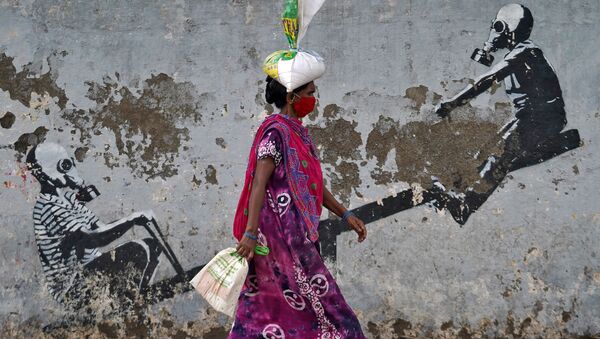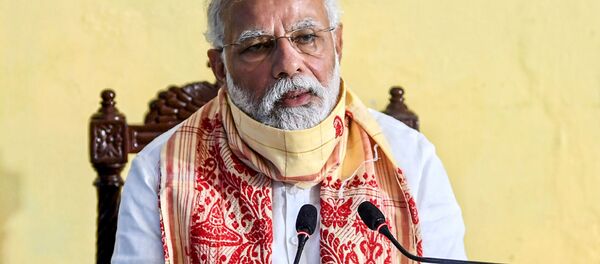Indian Prime Minister Narendra Modi on Tuesday offered that the COVID-19 situation in the country is not as dire as in the rest of the world and claimed that the nation's economy has begun to look up. Modi’s address came after an interaction with the state chiefs on the pandemic.
Modi declared that the COVID-19 recovery rate in India is now "over 50 percent", suggesting that the “coronavirus has not assumed as life threatening a form as in the rest of the world."
The prime minister claimed, without specifying who, that global health experts are praising the discipline shown by Delhi.
According to the Indian Ministry of Health and Family Affairs, of the total 343,091 COVID-19 cases recorded currently, 180,012 have recovered.
Modi presented an optimistic picture, saying, “Due to recent efforts, several green shoots in economy now visible, which are encouraging us to forge ahead.”
“Rise in power consumption, which was earlier falling, fertiliser sale in May this year is seeing a significant increase, a healthy increase in crop sowing in comparison to last year, production of two wheelers increasing, digital payment in retail reaching pre-lockdown level, increase in toll collection in May, and bouncing back of exports. These signals are encouraging us to forge ahead,” the prime minister said.
India has been under lockdown since 25 March, while currently the country is under initial phases of unlocking, even as COVID-19 infection numbers continue to rise.
The Indian economy had been slowing since 2018, due to the combined impact of the US-China trade war and instability in domestic financial markets. Against over 8 percent in 2018, growth almost halved, to 4.7 percent, at the end of 2019.
Quarterly growth data released by the Indian government reveals that gross domestic product (GDP) growth for the January-March quarter, or the last quarter of financial year 2019–20 (ending March 2020), feel to 3.1 percent, against 4.7 percent in the October-December 2019 quarter. Also, at 3.1 percent, GDP growth is almost half the 5.8 percent seen in the comparable quarter of the previous year (Jan–March 2019).



